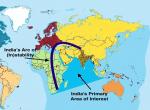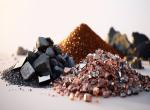Space exploration, once a preserve of the advanced industrialized countries, is no more being viewed as an area of esoteric research involving a huge investment and complex technological systems. Indeed, space technology has now become an indispensable tool for improving the quality of human life on earth in addition to helping boost the war fighting capability in a substantial manner. And on the international arena, space cooperation has emerged as a platform for furthering the diplomatic clout and political ambitions besides helping project “soft power”.
And this is an area where Communist China has made rapid forays in expanding its influence over many of the third world countries keen on entering the space age. By making available space services—by way of building custom made satellites followed by their in orbit-delivery—China not only stands to expand its business interests but also seeks to strengthen its diplomatic clout. By arranging soft loans and providing knowhow and expertise for building and launching satellites on reasonable terms, China is all set to become a recognised player in the multi- billion dollar global space market. Indeed, this dual offer of technological support and financial assistance on reasonable terms has made China the most sought after “space partner” for the developing countries.
Against such a backdrop, the possibility of India’s Himalayan neighbour Nepal turning to China for its satellite project is very much on the cards. Nepal which is now examining the feasibility of getting its first satellite launched before the middle of this decade , has , however revealed that it would look at launching the satellite “through a joint venture of national and international firms along with the Government of Nepal”. Further, the Nepalese Government sources in Kathmandu also stated that “If Nepal is unable to entirely use the satellite for its internal consumption, it can be leased to either China or India or both for commercial purposes”.
Given the aggressive pitch by the China Great Wall Industries Corporation (CGWIC), the commercial arm of the Chinese space programme, the Nepalese satellite project contract going the Chinese way is considered a “strong possibility.” Rapidly expanding Chinese influence over this erstwhile Hindu kingdom along with the rabid anti India stance of a section of the political spectrum in the country implies that in all probability, Nepal will turn to China for getting its satellite project off the ground.
There are no clear cut clues as of now on what steps India would initiate to wean Nepal away from China in the crucial area of satellite technology enterprise,. Of course, India can offer Nepal a co branded and co owned satellite that both the countries could share. For the ground reality is that Nepal may not need the entire capability of a satellite to meet its needs. Here India should play its card very shrewdly by bringing in diplomatic finesse to win the confidence of Nepal. Moreover, India should offer an economically alluring and technologically superb package to meet the Nepalese needs of satellite capability. As it is, the allotment of an orbital slot to Nepal to position its satellite by the Geneva based International Telecommunications Union (ITU) will expire by 2015. This implies that Kathmandu is required to launch the satellite before this deadline.
As it is, Indian security and intelligence agencies are already perturbed over the inroads made by China in forging space cooperation with Sri Lanka and Maldives, the two Indian Ocean island nations with which India has had a long history of cordial relations.
Bangladesh too is known to be moving closer to the Chinese offer to build and launch a dedicated satellite.
In fact, there is dismay in New Delhi over Bangladesh, whose emergence as an independent country owed much to the Indian support, inviting CGWIC for realizing its ”space plan.” The Request for Proposal (RFP) floated in 2011 by the telecom regulator of Bangladesh seeks to get a domestic communications satellite named “Bangabandhu” launched. And the addition of Nepal to the “celestial orbit” of China cannot but be a disturbing development for India with strong strategic, diplomatic and political overtones.
Indeed, India’s missed opportunities in terms of strengthening ties with its immediate neighbours through space cooperation has been the centrepiece of reports recently brought out by Research and Analysis Wing (R&AW).The thesis of R&AW is that China capitalised on India’s indifference to the needs of the neighbouring countries. Indeed, an Inter-Ministerial meeting held in February this year stressed the need for Indian Space Research Organisation (ISRO) to play a “pro active” role in helping Maldives and Sri Lanka realize their space dreams. It was felt that India could offer some of its vacant orbital slots for positioning of the proposed communications satellites of Sri Lanka and Maldives.
According to ISRO, “a mutually beneficial cooperation arrangement for building satellites and operating them with increased coverage areas over India can be worked out so that capabilities of the satellites can be used by India and Sri Lanka.” But this strategy is not likely to work. For Sri Lanka’s first partly owned satellite SupremeSAT which was launched by a Chinese Long March -1 rocket in November last has been hailed as a landmark event in Sino-Sri Lankan high tech collaboration. What does this development imply for India? Is this yet another addition to the String of Pearls strategy being vigorously pursued by China? Will Sino-Sri Lankan handshake in space give a new edge to China’s geo political game plan in the Indian Ocean? This partly owned satellite perched up over the Indian Ocean region could prove a trump card for China in providing a boost to its commercial, strategic and military interests in the Indian Ocean region. For both Sri Lanka and China, this space endeavour representing a joint venture between Colombo based regional satellite service provider SupremeSAT and CGWIC is a win win deal. 1 As part of this joint venture, a second SupremeSAT satellite is planned to be launched sometime this year. Also a fully owned Sri Lankan satellite will be launched by 2015.2
Responding to the Indian concerns, Sri Lankan Government sources in Colombo had made it clear that the satellite launch was a private sector initiative by Supremesat which entered into an agreement with CGWIC for the satellite launch.
“From a larger geopolitical perspective, it sends a message to India that a country in its own backyard is cosying up with China” says Brahma Chellany, an expert on strategic affairs at the New Delhi based Centre for Policy Research.
Of course, India’s strength in building world class satellites has widely been recognised but all said and done, the Bangalore based commercial arm of the Indian space programme, Antrix Corp lacks the kind of resources and expertise at the command of CGWIC. In particular, India lacks an operational launch vehicle powerful enough to deliver a communications satellite weighing over 2-tonne.
Also, India is yet to develop a base resurgent enough to launch a satellite on commercial terms. For the Antrix Corp to grab international orders for building and launching satellites, the Government of India should increase funding to strengthen and expand the infrastructure good enough to accomplish commercial orders.
On the other hand, China has a sound track record of building and launching communications satellites on turnkey basis for the developing countries including Pakistan, Nigeria and Venezuela. CGWIC has also signed satellite and ground systems export contracts with Bolivia and Laos.
China, which already boasts of three land locked launch centres, is now close to commissioning its new ultra modern coastal launch complex at Hainan Island which also happens to be the epicentre of the massive Chinese naval build up. This launch station, besides helping China launch its heavier class launch vehicles, would help attract more international customers for its commercial space launch enterprise. In contrast, India boasts of a solitary launch complex in Sriharikota Island on the eastern coast of the country. Though for quite sometime there have been reports to suggest that ISRO is looking at setting up a second launch centre, concrete, ground level action to realize this seems to be lacking. A single operational launch pad makes for a poor strategic sense from the operational point of view.
The proposal of the Maldivian Defence Ministry to seek Chinese assistance for realizing its “space ambition” is a sign that this Indian Ocean island nation is edging closer to China. Chinese IT and telecom companies have already established a strong presence in Maldives. In the context of the growing anti India feelings in Maldives following the exit of the Indian infrastructure enterprise GMR group from the country, China has become a favoured partner for many of the infrastructure projects in the country.
Moreover, the Indian side had not responded to the Maldivian Government’s tender for a satellite. Though six aerospace outfits from across the world responded to the Maldivian tender, the Government at Male responded positively to the Chinese offer. In fact, sometime back, the Maldivian Government sources had said that India had not sent any proposal for the satellite project. But China which has already dug deep in the “developmental landscape”of Maldives, is making all out efforts to bag the satellite project order.
The view in New Delhi is that ISRO could send a delegation to Maldives to impress upon the political leadership of the country on the feasibility of the Indian offer to build and launch a satellite. Whether this approach would help India win Maldivian confidence, only time will tell.
Indeed, China views its space forays as a pathway for its technological excellence and strategic supremacy. For China, space ascendancy is a major step towards its emergence as a global military power at par with US. No wonder then that China’s political leadership has a strong conviction that its forays in space provides it with a spring board to boost its national prestige, showcase its technological prowess, further its military and strategic goals, strengthen its diplomatic and political clout and expand its business interests by offering assistance to the third world countries keen on entering the space age. In contrast, India’s political leadership seems to be long way off from nurturing such a vision.
Notes
- SupremeSat Chairman R.M.Manivannan has said that Indian Space Research Organisation (ISRO) is cool to his offer of making available the Supremesat-1 capability to the users in India. ISRO is the nodal agency for providing leased satellite capability to users--mainly in broadcasting and telecommunications sectors--in India. Incidentally, India is experiencing an acute shortage of satellite capacity in the context for the phenomenal expansion of telecom and broadcasting services in the country.
- SupremeSat has inked a US$215-million deal with China Great Wall Industries Corporation(CGWIC) for the in-orbit delivery of SupremeSat-2 satellite. As per the contract, SupremeSat-2 will be launched by means of a Chinese Long March Vehicle in mid-2016.
Published Date: 24th July 2013, Image Source: http://2.bp.blogspot.com









Post new comment